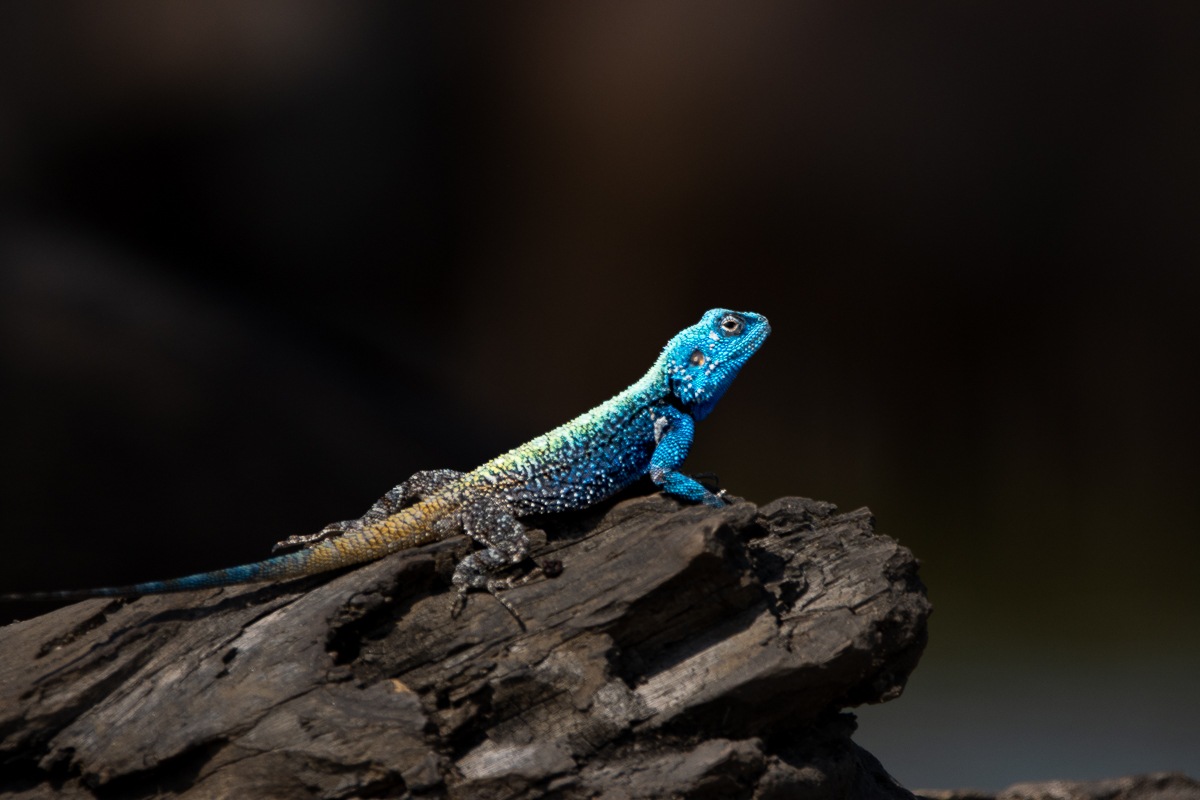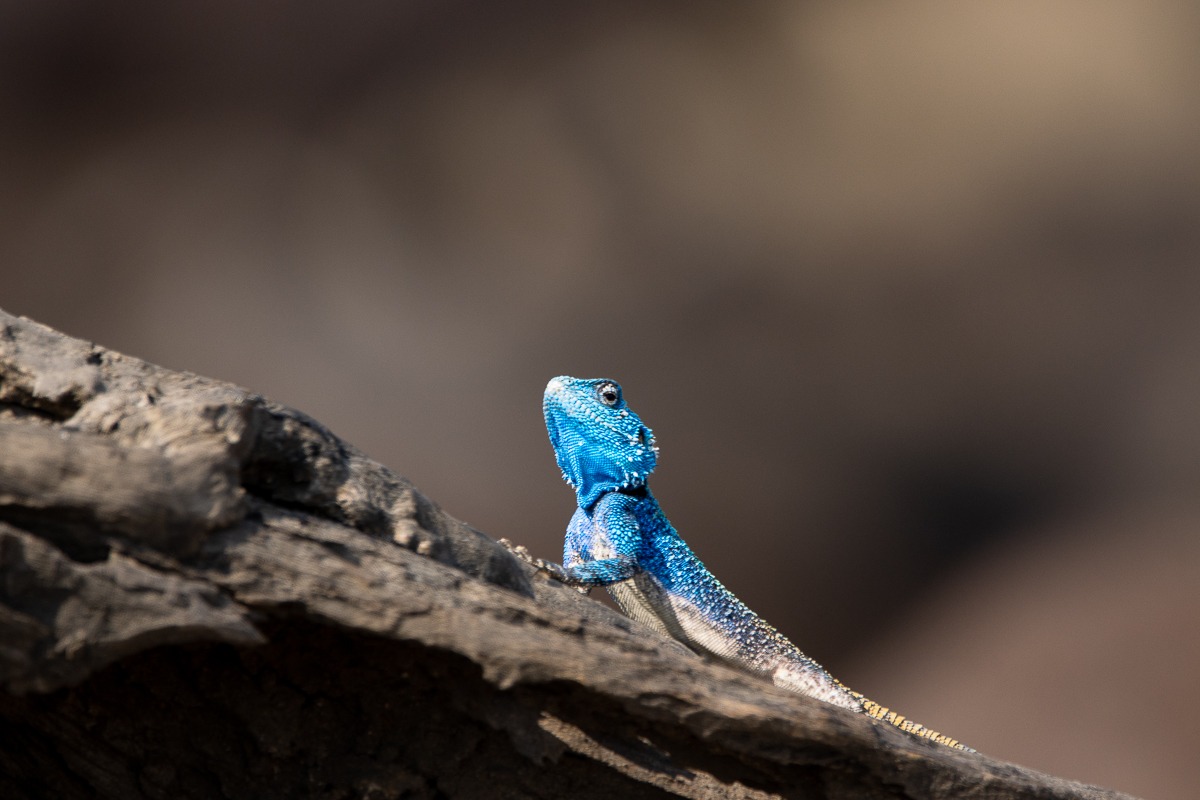Exploring the fascinating Tree Agama
on Oct 15, 2024Domain: Eukaryota
Kingdom: Animalia
Phylum: Chordata
Class: Reptilia
Order: Squamata
Suborder: Iguania
Family: Agamidae
Genus: Acanthocercus
Species: A. atricollis

When it comes to the diverse and fascinating world of animal species, one cannot overlook the Tree agama. This unique creature belongs to the Agamidae family and is known for its colourful appearance and interesting behaviours. In this blog, we will look into the world of the Tree agama and uncover some of its most intriguing characteristics.
Appearance and Habitat
The Tree agama, also known as the common agama or rainbow agama, derives its name from its ability to climb and dwell in trees. It is found predominantly in the sub-Saharan regions of Africa, where it can be spotted perched on branches or basking in the sun on tree trunks. One of the most striking features of the Tree agama is its vibrant colouration. Males often boast bright hues of red, orange, blue, and green, while females tend to have a more subdued appearance.

Behaviour and Diet
Tree agamas are diurnal creatures, meaning they are most active during the day. They are skilled climbers and often use their agile bodies and long tails to navigate through the branches of trees. These reptiles are omnivorous and feed on a varied diet that includes insects, small invertebrates, and even plant matter. One interesting behaviour displayed by male Tree agamas is their territorial displays, which involve inflating their throats and displaying their colourful bodies to attract mates and deter competitors.


Reproduction and Life Cycle
During the breeding season, male Tree agamas compete for the attention of females through elaborate displays and territorial behaviour. Once a female selects a mate, she will lay a clutch of eggs in a shallow nest dug in the ground. The eggs are then incubated for several weeks before hatching, producing miniature versions of the adult agamas. These young agamas are independent from birth and must fend for themselves in the wild.

Conservation Status
Like many species in the animal kingdom, Tree agamas face threats to their survival from factors such as habitat loss, climate change, among others. Conservation efforts are crucial in preserving the populations of these beautiful creatures and ensuring their continued existence in the wild. By raising awareness about the importance of protecting their habitats and promoting sustainable practices, we can help safeguard the future of the Tree agama and other vulnerable species.

Blog by Ronald Mutero (Selati Camp Ranger)







